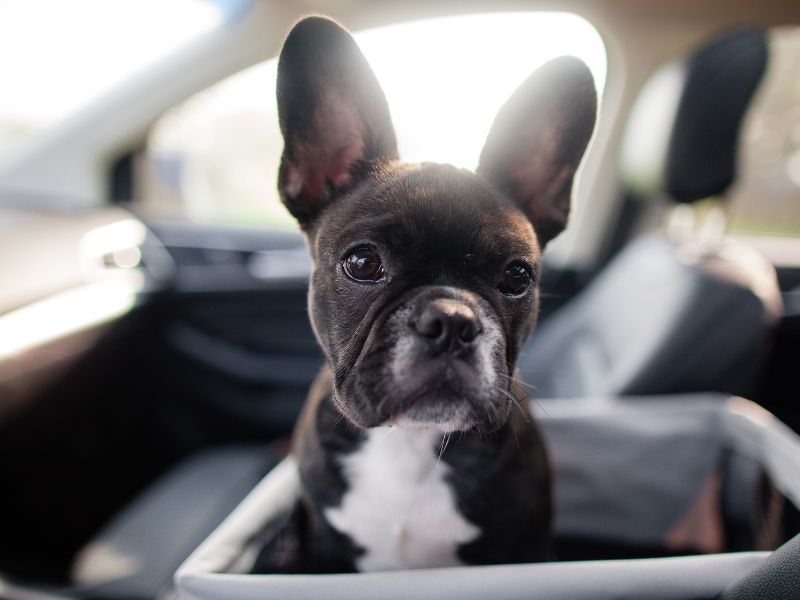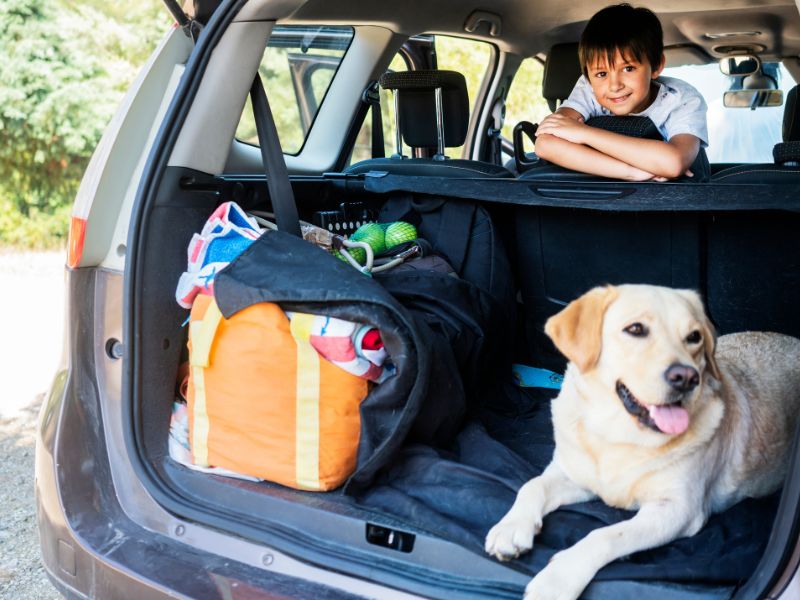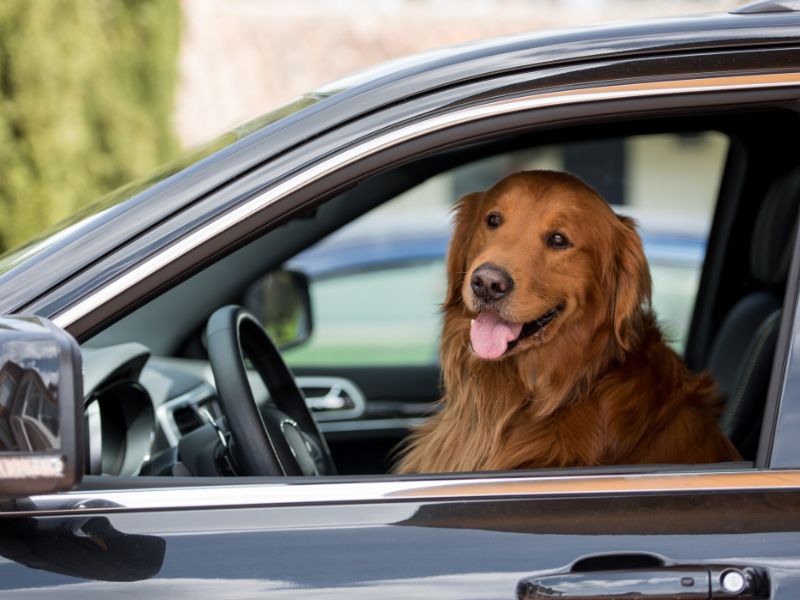Is your furry friend anxious and stressed when it comes to car travel? Do they tremble, whine, or vomit at the mere thought of getting in the car? You’re not alone. Many pet owners struggle to find effective ways to help their anxious dogs feel more comfortable during car rides. But fear not, because we’re here to help. In this guide, we will explore proven techniques and strategies to alleviate your dog’s anxiety and make car travel a breeze. From creating a soothing environment to using calming aids, we’ll cover it all. You’ll discover practical tips to gradually desensitize your dog to car rides, making each journey a stress-free experience for both of you. So, whether you’re planning a road trip or simply need to take your furry friend to the vet, get ready to transform car travel from a nightmare to a joyride. Your dog will thank you, and you’ll enjoy the peace of mind knowing that your four-legged companion is comfortable and content in the car.
Understanding the Anxiety in Dogs During Car Travel
Car travel can be a source of anxiety for many dogs. It’s important to understand the signs, causes, and impact of this anxiety to effectively address it. Dogs may exhibit various signs of anxiety during car travel, including panting, drooling, restlessness, pacing, trembling, whining, barking, and even vomiting. These signs can be distressing for both the dog and the owner, making car travel an unpleasant experience for everyone involved.
The causes of anxiety in dogs during car travel can vary. Some dogs may have had a negative experience in the past, such as a car accident or a car sickness episode. Others may simply be uncomfortable with the motion or confined space of the car. Additionally, dogs with separation anxiety or general anxiety disorders may find car travel particularly stressful. Understanding the specific triggers for your dog’s anxiety can help you tailor your approach to addressing it.
To effectively help your anxious dog, it’s important to start by preparing them for car travel.
Preparing Your Dog for Car Travel
Preparing your dog for car travel involves creating positive associations with the car and gradually desensitizing them to the experience. Start by introducing your dog to the car in a calm and relaxed environment. Allow them to explore the car at their own pace, rewarding them with treats and praise for any positive behavior. This helps them associate the car with positive experiences.
Next, gradually increase the duration and intensity of car rides. Start with short trips around the block and gradually extend the distance as your dog becomes more comfortable. Take breaks during longer rides to allow your dog to stretch their legs and relieve any anxiety that may build up. It’s important to be patient and go at your dog’s pace, as rushing the process can increase their anxiety.
Creating a comfortable environment in the car is also crucial for helping your dog feel at ease during travel.

Creating a Comfortable Environment in the Car
The car environment plays a significant role in your dog’s comfort during travel. Start by ensuring that the car is clean and free from any strong odors that may trigger anxiety. Use seat covers or blankets to create a cozy space for your dog to relax. Familiar scents, such as their bedding or a favorite toy, can also help create a sense of security.
Consider using a crate or a dog seat belt harness to keep your dog secure and reduce motion sickness. This provides them with a designated space and helps prevent them from moving around excessively. It’s important to choose a crate or harness that is the appropriate size for your dog and is comfortable for them to stay in for an extended period.
In addition to creating a comfortable environment, using calming aids can further help alleviate your dog’s anxiety during car travel.
Using Calming Aids for Dogs During Car Travel
Calming aids can be a useful tool in helping anxious dogs feel more at ease during car travel. There are several options available, including pheromone sprays, calming collars, and anxiety wraps. These products work by releasing soothing scents or applying gentle pressure to help reduce anxiety.
Pheromone sprays, such as Adaptil, mimic the natural calming pheromones produced by mother dogs to comfort their puppies. These sprays can be applied to your dog’s bedding or sprayed directly in the car to create a calming environment. Calming collars, like the ThunderShirt, use gentle pressure to provide a sense of security and reduce anxiety. These collars can be worn during car travel to help calm your dog.
Alongside creating a comfortable environment and using calming aids, gradual desensitization techniques can significantly improve your anxious dog’s tolerance to car travel.
Gradual Desensitization Techniques for Anxious Dogs
Gradual desensitization involves exposing your dog to car travel in a controlled and positive way, gradually increasing their tolerance to the experience. Start by sitting with your dog in the stationary car, rewarding calm behavior with treats and praise. Once they are comfortable with this step, start the engine without going anywhere and continue rewarding calm behavior.
Next, move on to short trips around the block, gradually increasing the duration and distance as your dog becomes more comfortable. Each time you take a trip, reward your dog with treats and praise for remaining calm. It’s important to remain patient and consistent throughout the desensitization process, as progress may be slow but steady.
Positive reinforcement training is another effective technique to help your dog associate car travel with positive experiences.

See Also: What is Demand Barking and How to Deal with It
And: How to Keep Your Dog Calm During Fireworks Season
Positive Reinforcement Training for Car Travel
Positive reinforcement training involves rewarding your dog for desired behaviors to encourage them to repeat those behaviors in the future. To use this technique for car travel, start by associating the car with positive experiences. Each time your dog gets in the car, offer them treats and praise. Gradually increase the duration of car rides, rewarding your dog for remaining calm and relaxed.
You can also use treats and praise during the car ride to reinforce positive behavior. For example, if your dog remains calm and relaxed, reward them with a treat. This helps them associate car travel with positive rewards and encourages them to remain calm in the future.
For severe cases of anxiety, seeking professional help is recommended.
Seeking Professional Help for Severe Anxiety
If your dog’s anxiety during car travel is severe and persists despite your best efforts, it may be beneficial to seek professional help. A veterinarian or a certified dog behaviorist can assess your dog’s specific needs and provide tailored guidance and treatment options. They may recommend behavior modification techniques, medication, or a combination of both to help alleviate your dog’s anxiety.
Remember, every dog is unique, and what works for one may not work for another. It’s important to be patient, consistent, and understanding throughout the process of helping your anxious dog feel more comfortable during car travel.
In conclusion, car travel doesn’t have to be a nightmare for your anxious dog. By understanding their anxiety, preparing them for travel, creating a comfortable environment, using calming aids, and implementing gradual desensitization techniques, you can transform car travel into a stress-free experience for both you and your furry friend. Remember to employ positive reinforcement training and seek professional help if needed. With time, patience, and the right strategies, you can enjoy stress-free car travel with your anxious dog. Happy travels!

